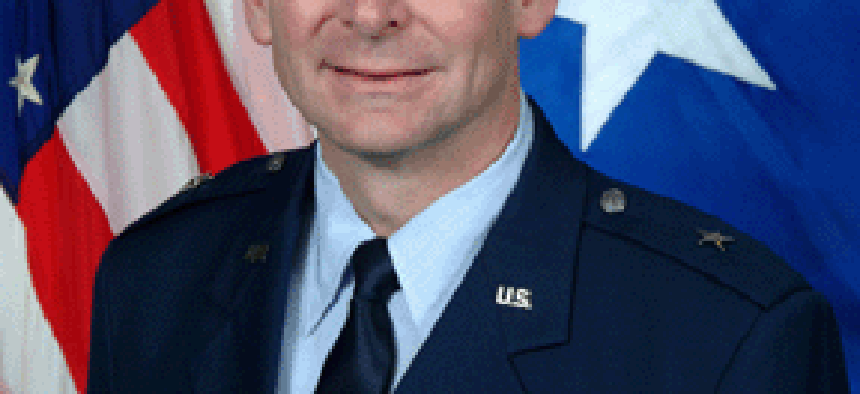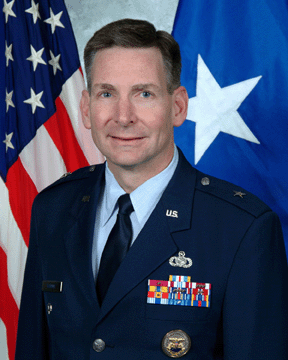Air Force Brig. Gen. David Warner, director of command and control programs at the Defense Information Systems Agency, has an answer for the 90-plus legacy interfaces that currently tie into the joint battlefield C2 system under his control: service-oriented architecture.Warner said the next-generation, Net-Enabled Command Capability (NECC)'which will replace the Global Command and Control System-Joint (GCCS-J)'will feature an SOA construct so capabilities can be delivered as needed, as a service. In addition to GCCS-J and NECC, Warner also is responsible for the Global Combat Support System (GCSS), Multinational Information Sharing (MNIS), and Collaboration Force Analysis, Sustainment and Transportation (CFAST). This is the next generation of command and control capability. So it's all about enabling the warfighter to leverage that vast amount of information that's out there to command and control forces as needed to accomplish missions across the board in a very dynamic, quick-changing, time-sensitive environment.So Net-Enabled Command Capability is going to leverage off the current capability we have today, which is GCCS-J. As we go to the next generation or the next version of GCSS-J'which is called Block V, which will be delivered in two versions, 4.1 and 4.2'we're going to deliver those in a service-oriented architecture construct as much as we can.So if you need weather [reports], if you need intel, whatever it is, that information is made available and the consumer, the warfighter, can then draw on that information as needed.Now there may be some need for that information because of the vastness, especially in the area of ISR [intelligence, surveillance, reconnaissance] for that information to be assimilated, to be corroborated, to be fused, until you get several of the intel sources that tell you a little piece about something. As you bring those together and aggregate them based on certain algorithms, you can start to see that this piece of information, this piece of information, this piece of information, brought together, tells me that I've got an enemy at this location. We achieved Milestone A on March 7, which allows us to proceed into the Technology Development Phase. Our Milestone Decision Authority, John Grimes [DOD CIO], signed off the Acquisition Decision Memorandum on that date so we now have objectively 18 months, give or take, to explore the ability to produce capability.He gave us some do-outs in that ADM. Before you can go to Milestone B, he has to approve certain things, including the validity and processes associated with this Federated Development and Certification Environment [known as the sandbox, or FDCE], plus I have to do all these other types of documentation to the program, the systems engineering plan, the funding strategy, etc.The [Capabilities Development Document] is currently in the works with [Joint Forces Command] leading that effort.We went out and did a call for pilots back in January 2006 and these were Evaluation Capability Modules. We had over 100 offered up to us by the services, components and agencies.We did not go to industry at that time because we wanted to stay within what the government was already paying for and already started working some contracts on.These modules were then chosen based on their level of maturity and ability to prove out the concept.We also divided up two time periods'we call them time boxes'of bringing things into the sandbox and again proving out the concepts.So now, what you put in play in this new way of doing business [is that] you have broken down the functions that need to be performed into bite-sized chunks. In SOAs, you can go find where that best capability resides and, again, I'm not going to build from scratch, I'm going to see what's out there.I see myself as a master conductor, but my baton has to have several thousand bolts so I can determine, along with the warfighter, my joint combat capability developer, which is best of breed or perhaps even best of best of breed.As we get into open standards, open architectures in an SOA environment, we should be able to say, Hey, you've got 80 percent of the answer, you've got 10 percent of the answer, you've got 5 percent [and] you've got 5 percent, so let's bring them together. So as we're in the sandbox, in this developmental phase, we have the opportunity to do that.It's going take a new construct of folks being open and flexible enough and it's going to be a whole new business paradigm. NECC is the next evolution of C2 in the Department of Defense. It will be based on SOA and as we move towards this new construct, we are going to leverage and bring in as much capability as possible rather than building from scratch.GCCS-J and the other GCCS family of systems will be an integral part of this. We are trying to help the department move away from the current lengthy process to determine requirements, development, build and field a C2 system by developing this new construct, and leveraging and improving existing capabilities before building anything. In March, we are due to go back and do a mid-phase Overarching Integrated Product Team report back to the stakeholders, to the services and [combatant commands] on where we are so they get a chance to say, yeah, you're heading in the right direction or whatever.We are doing an Interim Program Review on Sept. 12 [2007], just to kind of get things on the table. In addition to the IPR, we are working on fleshing out and maturing the processes for the FDCE, engineering, architecture, etc., while JFCOM is working on maturing the JCCD process.
Air Force Brig. Gen. David Warner







